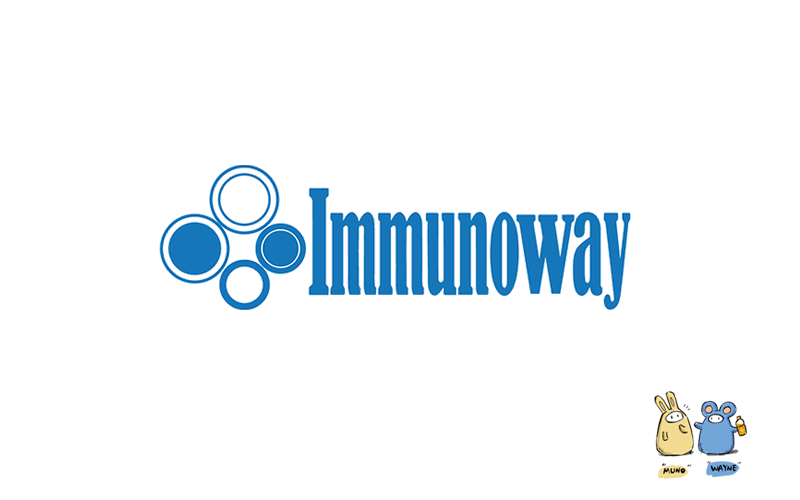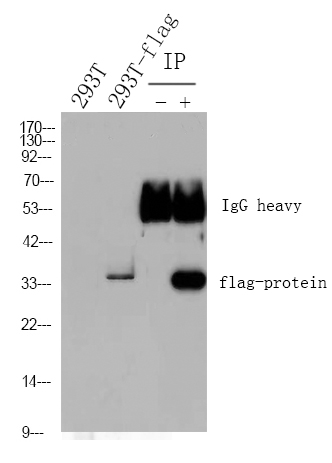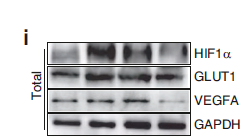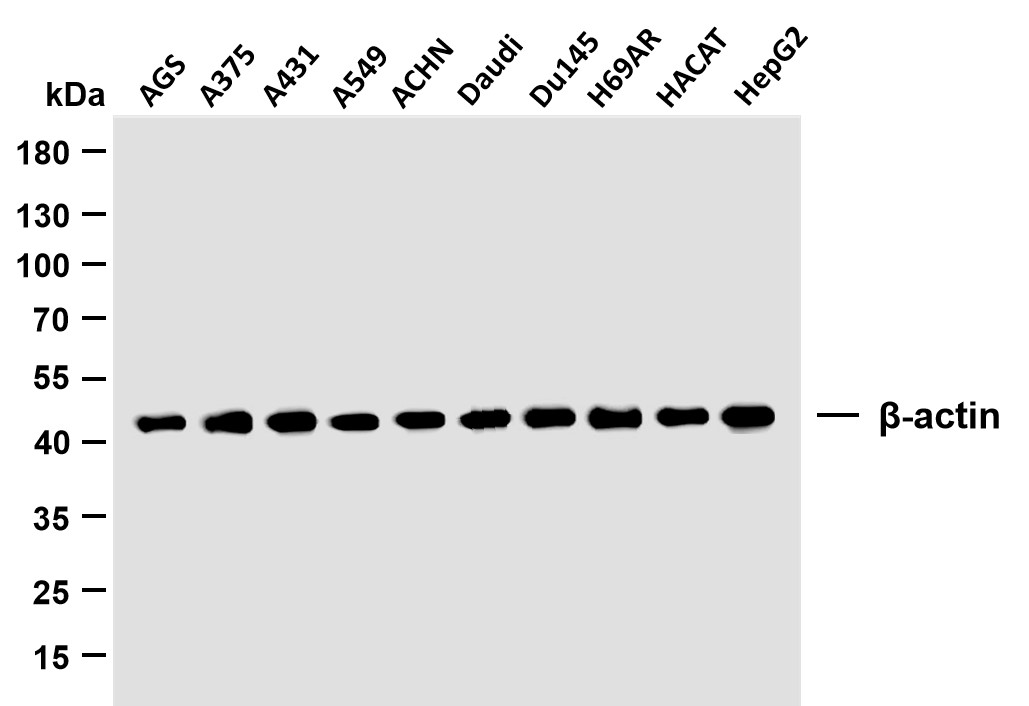
主要信息
Target
BMAL1
Host Species
Rabbit
Reactivity
Human, Mouse, Rat
Applications
WB, IHC, IF, ELISA
MW
75kD (Observed)
Conjugate/Modification
Unmodified

货号: YT5423
规格
价格
货期
数量
200μL
¥3,780.00
现货
0
100μL
¥2,300.00
现货
0
40μL
¥960.00
现货
0
加入购物车


已收藏


收藏
详细信息
推荐稀释比
WB 1:500-1:2000; IHC: 1:100-1:300; ELISA 1:20000; IF 1:50-200
组成
Liquid in PBS containing 50% glycerol, 0.5% BSA and 0.02% sodium azide.
特异性
BMAL1 Polyclonal Antibody detects endogenous levels of BMAL1 protein only when acetylation at K538.
纯化工艺
The antibody was affinity-purified from rabbit antiserum by affinity-chromatography using epitope-specific immunogen.
储存
-15°C to -25°C/1 year(Do not lower than -25°C)
浓度
1 mg/ml
实测条带
75kD
修饰
Unmodified
克隆性
Polyclonal
同种型
IgG
相关产品
抗原&靶点信息
免疫原:
The antiserum was produced against synthesized peptide derived from human BMAL1 around the non-acetylation site of Lys538. AA range:501-550
展开内容
特异性:
BMAL1 Polyclonal Antibody detects endogenous levels of BMAL1 protein only when acetylation at K538.
展开内容
基因名称:
ARNTL
展开内容
蛋白名称:
Aryl hydrocarbon receptor nuclear translocator-like protein 1
展开内容
别名:
ARNTL ;
BHLHE5 ;
BMAL1 ;
MOP3 ;
PASD3 ;
Aryl hydrocarbon receptor nuclear translocator-like protein 1 ;
Basic-helix-loop-helix-PAS protein MOP3 ;
Brain and muscle ARNT-like 1Class E basic helix-loop-helix protein 5 ;
bHLHe5 ;
Member of PAS protein 3 ;
PAS domain-containing protein 3 ;
bHLH-PAS protein JAP3
BHLHE5 ;
BMAL1 ;
MOP3 ;
PASD3 ;
Aryl hydrocarbon receptor nuclear translocator-like protein 1 ;
Basic-helix-loop-helix-PAS protein MOP3 ;
Brain and muscle ARNT-like 1Class E basic helix-loop-helix protein 5 ;
bHLHe5 ;
Member of PAS protein 3 ;
PAS domain-containing protein 3 ;
bHLH-PAS protein JAP3
展开内容
背景:
The protein encoded by this gene is a basic helix-loop-helix protein that forms a heterodimer with CLOCK. This heterodimer binds E-box enhancer elements upstream of Period (PER1, PER2, PER3) and Cryptochrome (CRY1, CRY2) genes and activates transcription of these genes. PER and CRY proteins heterodimerize and repress their own transcription by interacting in a feedback loop with CLOCK/ARNTL complexes. Defects in this gene have been linked to infertility, problems with gluconeogenesis and lipogenesis, and altered sleep patterns. Several transcript variants encoding different isoforms have been found for this gene. [provided by RefSeq, Jul 2014],
展开内容
功能:
Alternative products:Additional isoforms seem to exist,Function:ARNTL-CLOCK heterodimers activate E-box element (3'-CACGTG-5') transcription of a number of proteins of the circadian clock. This transcription is inhibited in a feedback loop by PER, and also by CRY proteins.,miscellaneous:CLOCK-ARNTL double mutations within the PAS domains result in syngernistic desensitization to high levels of CRY on repression of CLOCK-ARNTL transcriptional activity of PER1 and, disrupt circadian rhythmicity.,PTM:Acetylated on Lys-538 upon dimerization with CLOCK. Acetylation facilitates CRY1-mediated repression.,PTM:Phosphorylated upon dimerization with CLOCK.,PTM:Sumoylated on Lys-259 upon dimerization with CLOCK.,similarity:Contains 1 basic helix-loop-helix (bHLH) domain.,similarity:Contains 1 PAC (PAS-associated C-terminal) domain.,similarity:Contains 2 PAS (PER-ARNT-SIM) domains.,subunit:Component of the circadian clock oscillator which includes the CRY proteins, CLOCK or NPAS2, ARNTL or ARNTL2, CSNK1D and/or CSNK1E, TIMELESS and the PER proteins. Efficient DNA binding requires dimerization with another bHLH protein. Heterodimerization with CLOCK is required for E-box-dependent transactivation, for CLOCK nuclear translocation and degradation, and, for phosphorylation of both CLOCK and ARNTL. Interaction with PER and CRY proteins requires translocation to the nucleus. Interaction of the CLOCK-ARNTL heterodimer with PER or CRY inhibits transcription activation. Interacts with HSP90; with AHR in vitro, but not in vivo.,tissue specificity:Highly expressed in the adult brain, skeletal muscle and heart.,
展开内容
细胞定位:
Nucleus . Cytoplasm . Nucleus, PML body . Shuttles between the nucleus and the cytoplasm and this nucleocytoplasmic shuttling is essential for the nuclear accumulation of CLOCK, target gene transcription and the degradation of the CLOCK-ARNTL/BMAL1 heterodimer. The sumoylated form localizes in the PML body. Sequestered to the cytoplasm in the presence of ID2. .
展开内容
组织表达:
Hair follicles (at protein level). Highly expressed in the adult brain, skeletal muscle and heart.
展开内容
研究领域:
>>Circadian rhythm ;
>>Dopaminergic synapse
>>Dopaminergic synapse
展开内容
信号通路
文献引用({{totalcount}})
货号: YT5423
规格
价格
货期
数量
200μL
¥3,780.00
现货
0
100μL
¥2,300.00
现货
0
40μL
¥960.00
现货
0
加入购物车


已收藏


收藏
Recently Viewed Products
Clear allToggle night Mode
{{pinfoXq.title || ''}}
Catalog: {{pinfoXq.catalog || ''}}
Filter:
All
{{item.name}}
{{pinfo.title}}
-{{pinfo.catalog}}
主要信息
Target
{{pinfo.target}}
Reactivity
{{pinfo.react}}
Applications
{{pinfo.applicat}}
Conjugate/Modification
{{pinfo.coupling}}/{{pinfo.modific}}
MW (kDa)
{{pinfo.mwcalc}}
Host Species
{{pinfo.hostspec}}
Isotype
{{pinfo.isotype}}
产品 {{index}}/{{pcount}}
上一个产品
下一个产品
{{pvTitle}}
滚轮缩放图片
{{pvDescr}}



















